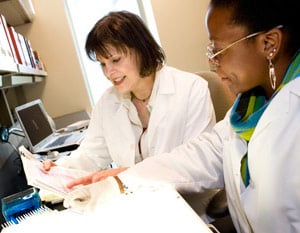
Judy Van de Water and colleague Credit: UC Davis Health System
In a newly published study, researchers from UC Davis identify a biomarker for autism in a subset of children, finding that the mothers of children with autism were more than 21 times as likely to have the specific MAR antibodies in their systems that reacted with fetal brain proteins, or antigens, than were the mothers of children who did not have autism.
UC Davis MIND Institute researchers have identified the specific antibodies that target fetal brain proteins in the blood of a subset of women whose children are diagnosed with autism. The finding is the first to pinpoint a specific risk factor for a significant subset of autism cases, as well as a biomarker for drug development and early diagnosis. The researchers have named autism related to these antibodies “Maternal Autoantibody-Related,” or MAR autism.
The study found that the mothers of children with autism were more than 21 times as likely to have the specific MAR antibodies in their systems that reacted with fetal brain proteins, or antigens, than were the mothers of children who did not have autism. In fact, specific combinations of MAR antibodies were not found in the blood of mothers whose children were typically developing.
UC Davis MIND Institute Professor Judy Van de Water discusses her research discovery that approximately 23 percent of all cases of autism are related to maternal antibodies attacking the fetal brain.
The research, “Autism-specific maternal autoantibodies recognize critical proteins in developing brain,” is published online today in Translational Psychiatry, a Nature journal.
The study was led by principal investigator and immunologist Judy Van de Water, a researcher affiliated with the MIND Institute. Earlier studies by Van de Water and her colleagues found that women with certain antibodies in their bloodstreams are at greater risk of having a child with autism and that their children exhibited more severe language delays, irritability, and self-injurious behaviors than did the autistic children of mothers whose blood did not have the antibodies.
“Now we will be able to better determine the role of each protein in brain development,” said Van de Water, professor of internal medicine. “We hope that, one day, we can tell a mother more precisely what her antibody profile means for her child, then target interventions more effectively.”
To identify the exact antigens targeted by the mothers’ antibodies, Van de Water and her colleagues conducted the research in Northern California using blood samples from 246 mothers of children with autism and of a control group of 149 mothers of children without autism to examine their reactivity with the candidate antigens.
Seven antigens were significantly more reactive to the blood of mothers of children with autism than to that of the control mothers. The study found that the mothers with antibodies that reacted with any one of these antigens, either individually or in combination with other antigens, were more than three times as likely to have a child with autism spectrum disorder.
Several combinations of antibodies in the blood from mothers of children with autism were not found in the control mothers’ blood. Nearly 23 percent of mothers of children with autism had certain combinations of autoantibodies against the target antigens, compared with less than 1 percent of mothers of children without the disorder.
The specific antigens identified in the study are lactate dehydrogenase A and B, cypin (guanine deaminase), stress-induced phosphoprotein 1, collapsing response mediator proteins 1 and 2, and Y-box binding protein. All are found throughout the body, but also are expressed at significant levels in the human fetal brain and have established roles in neurodevelopment. For example, cypin is an enzyme that plays an important role in normal neurite branching, a fundamental function in the developing brain, whereas the CRMP proteins are critical later in neuron development for axon outgrowth.
Maternal antibodies are known to cross the placenta during pregnancy and can be detected in a fetus as early as 13 weeks. By 30 weeks, maternal antibody levels in the fetus are about half that of the mother, and at birth, the concentration is even greater in the newborn than in the mother herself. The maternal antibodies stay in the baby’s bloodstream for about 6 months after birth, after which the baby’s own immune system takes over.
Once in the fetal bloodstream, the antibodies then may enter the brain and attack cells that have corresponding proteins that act as antigens. This antigen-antibody response is an important defense against foreign invaders, such as bacteria or viruses, but is not normally directed against oneself. When directed against one’s own tissue, the antibodies are known as autoantibodies.
“It is important to note that women have no control over whether or not they develop these autoantibodies, much like any other autoimmune disorder,” Van de Water said. “And, like other autoimmune disorders, we do not know what the initial trigger is that leads to their production.”
Understanding which proteins and which pathways are implicated in MAR autism can help elucidate the causes of autism and possibly lead to new therapies, such as administering ‘antibody blockers’ to the mother during pregnancy to prevent damage to the developing fetal brain, Van de Water said.
These findings are leading to the development of a MAR diagnostic test for autism, which would be available to the mothers of young children who are showing signs of developmental delay. If the test were positive, the child would be a candidate for early behavioral intervention.
“These findings are incredibly important because they establish a cause for a significant portion of autism cases, thereby opening up new lines of inquiry into possible biological treatments,” said MIND Institute Director Leonard Abbeduto. “In addition, the findings demonstrate that a diagnostic test is within reach. This test would be invaluable for women who are considering becoming pregnant and could lead to earlier and more accurate diagnosis of children with developmental challenges and help get them into behavioral interventions at younger ages.”
A MAR diagnostic test also would assess a mother’s risk of having a child with autism prior to conception, which is particularly important for women who already have a child with the disorder. UC Davis has patented this technology and licensed the exclusive worldwide rights to develop it for commercial purposes to Pediatric Bioscience, Inc.
“We know that early behavioral interventions for autism are critical,” said Isaac Pessah, professor and chair of the Department of Molecular Biosciences in the UC Davis School of Veterinary Medicine and former director of the UC Davis Center for Children’s Environmental Health. “Developing a predictive test for autism before symptoms become obvious could have an enormous impact on treating children with the condition.”
Study participants were from the CHARGE (Childhood Autism Risks from Genetics and the Environment) study, an ongoing study that was launched in 2001 by the MIND Institute and the UC Davis Center for Children’s Environmental Health, of which Van de Water now is director. Children with autism spectrum disorder, children with developmental delay and typically developing children between the ages of 2 and 5 years are studied with the goal of better understanding the causes of autism.
A related study is the MARBLES (Markers of Autism Risk in Babies ― Learning Early Signs) study, also being conducted at the MIND Institute and the Center for Children’s Environmental Health. This study follows pregnant women who already have a child with autism. Multiple factors related to genetics and the environment is under study in an effort to uncover predictors for having a child with autism.
Van de Water said knowing the specific protein targets of the maternal antibodies enables researchers to develop more precise animal models of autism.
The study was funded by NIEHS grants P01 ES11269-01 and 1 R01-ES015359; United States Environmental Protection Agency Science to Achieve Results (STAR) program grant R829388; the UC Davis MIND Institute; and an Autism Speaks graduate fellowship.
Other authors include Daniel Braunschweig, Paula Krakowiak, Paul Duncanson, Robert Boyce, Robin Hansen, Paul Ashwood, and Irva Hertz-Picciotto, all of UC Davis.
At the UC Davis MIND Institute, world-renowned scientists engage in collaborative, interdisciplinary research to find the causes of and develop treatments and cures for autism, attention-deficit/hyperactivity disorder (ADHD), fragile X syndrome, 22q11.2 deletion syndrome, Down syndrome, and other neurodevelopmental disorders.
Reference: “Autism-specific maternal autoantibodies recognize critical proteins in developing brain” by D Braunschweig, P Krakowiak, P Duncanson, R Boyce, R L Hansen, P Ashwood, I Hertz-Picciotto, I N Pessah and J Van de Water, 9 July 2013, Translational Psychiatry.
DOI: 10.1038/tp.2013.50

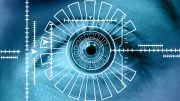


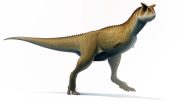

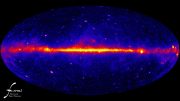

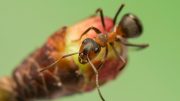
Biomarker for autism is traced to mother’s antibody affecting the fetus. It is like Rh-negative antibody of mother affecting the fetus of Rh-positive, The discovery relates autism to X-ralated disease like colour blindness male alopacea and thalessemea. So if the experiment succeeds autism can be prevented by blocking the anti body of mother during pregnancy like what we do for Rh-negative mothers and positive babies. Thank You.
RH negative mothers have a much higher level of autistic kids. I believe that this is caused by giving the Rhogam shot during pregnancy, but t could also be directly related to the RH- factor itself. However, history would support the factor of the Rhogam shot given during pregnancy. I am Rh- as was my husband, so no Rhogam was needed. My children were born in 1979, 1984 and 1992. The rhogam shot was discussed, but of course it was not needed. But I want to point out that at that point the Rhogam shot was only given AFTER birth – not during pregnancy. But now the Rhogam shot is given routinely at 28 weeks gestation.
I believe it is this newer practice that is setting up these children for autism. Their first vaccination occurred in utero, making them hypersensitive.Thus, subsequent shots could create the horror stories that we hear about, if we listen.
My grandson was born in 2012, and my granddaughter in 2013. They were exposed to the Rhogam shot in utero. My grandson reacted to his DPaT shot, with extreme drowsiness and lethargy for several hours. This alarmed my daughter and she said no more shots until we know more. (His side of the family was pushing for vaccines.)
Both my grandson and my granddaughter have had ailments reminiscent of the things that are consistent with reports regarding vaccine injured children. I posit that vaccine injury can start in the womb. The exposure to any questionable ingredients would an exponentially more powerful dose than if given at a later date.
It would also be worth tracking the data of RH- mothers and SIDS deaths – especially after the DPT shot window of time.
So – I read with interest the theories in the paper,above. I think that whatever you discover should be paired with studies on the impact of the Rhogam shots, as well as the flu shots given during pregnancy.
This article may be of help for further discussion. “Doctors Give Flu Shots to Pregnant Women Despite Evidence of Harm to Fetus”
I started this a reply to the comment, above. But I realize I am now also responding to the article itself. That you for your efforts to find the causative factors of autism. I believe the various shots can create a trigger to activate or further progress the factors at play. Also, pollution.
But the autism epidemic tracks most closely with the increased and aggressive vaccine schedule for pregnant women and babies. The factors that you have studied may very well lead to a useful testing system to remove the Russian Roulette quandary that many parents feel when trying to decide about vaccines.
I’m Rh neg O – my eldest child, male, is autistic born 1987 UK. I didn’t have the first Anti D shot until AFTER he was born.
Have you looked at the instances of FIRST born Rh Neg = autistic. OR First born Rh neg mother v the blood group of the child. I don’t know the blood group of my son.
Lorraine:
I was very interested to read what you had to say. There are many risk factors for autism. The ones that concern me are first-trimester ultrasounds, vaccines of any kind during pregnancy, and a too heavy vaccine schedule in the USA once a baby is born.
There are other factors, too, most likely. Babies are fragile, and we must first “do no harm.” I think this thought has been lost due to putting profit motive and protection of the CDC schedule ahead of the individual baby’s needs. If that negative factor was removed, I believe we would get to the bottom of the autism question rather quickly.
Hi I am RH negative and my son has autism he was born in 1988 UK I do not remember having any injections .After a long and difficult birth he had a forceps delivery and afterwards he became jaundiced and lethargic and was taken into the special unit for a few days .his head was badly bruised . Could his autism be a result of the blood group problem ?
I am B- and had a baby with a positive man my ex-husband. My daughter was born with high bilirubin and I had to take her back to the hospital to be treated for that and years later found she had Chiari malformation it has never effected her so we left it alone. My daughter is 32 years old now and was mentally gifted growing up and is a lawyer now with 4 degrees three BS degrees she received all at once in the mentally gifted program at Penn State University. I would like to know if the Chiari malformation is a result of mating with a non rh- man?
Also, I forgot to mention I did have the rogan shot while pregnant with her and if that had anything to do with the Chiari malformation?
I have four kids two of them have developmental delays! My daughter higher functioning ,my son on the lower scale of ASD. I’am O- and had the Rogan shot for all four pregnancies. I’m now wondering if the Shot caused their problems?!!
I also wonder the same. Received rhogam with my daughter, and she is on the spectrum. After the shot, her growth slowed down, doctor recommended early delivery. I experiences immune system activation, leading to psoriasis and feeling constantly tired, almost falling asleep while driving to the point when I had to pull over and rest. My son was born non autistic, no rhogam during pregnancy…I could not finf ANY long term studies comparing vaxx vs untaxed mothers and outcome on the children
Wow! What an interesting read, I’m O- & Rh-, my husband is RH+ so Rohgam was recommended at 28 weeks and after birth. My child is in the process of an Autism diagnosis. I am going to have to read up on this further. I wonder if the flu shot during pregnancy has any impact as well. The dosage would be much different for an infant, as opposed to how much adults receive.
I am RH-, husband +. I had Anti D intection on 1st child during & after pregnancy with no problems. On second pregnancy I was tested for antibodies on week 28 as no antibodies were found they gave me antiD inyection, however nobody knows how.. I created antibodies after that and my son was born very jaundiced, he stayed in neo-unit 9 days with different treatments, also during 5 months after birth. He is 3 and in the proccess of ASD diagnose..